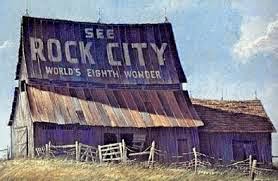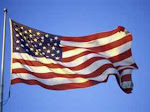
When Helen Keller was made blind and deaf through fever at the age of nineteen months, the prospects for her seemed anything but rosy. Born in 1880, at a time when blind/deaf people were likely to be consigned to the poor house or asylum, she went on to live a fuller and more adventurous life than many before or since.
Robbed by illness of two of her senses, she used the others to try and fully experience and learn about the world she lived in. As a child, she had invented a vocabulary of around sixty signs to communicate with those around her. She learned to do certain tasks around the house, and to identify people by feeling their clothes and faces.
Nevertheless, the difficulties of communicating meant that often Helen could be a rather riotous child and prone to tantrums. She would through things around, and even locked her mother in the pantry. Perhaps even in this we see the kind of fighting spirit that characterized much of Helen’s life!
It’s not hard to imagine that Helen’s behavior, born of frustration with the limits placed on her life, was frustrating for her parents too; eventually they decided to hire a private tutor-cum-governess to assist with her education and upbringing. For Helen, this was a world-changing day, and one she was later to describe as "the most important day in all my life".
Anne Sullivan, 21 years old and a recent graduate of Perkins Institute for the Blind in Boston, was that woman. Herself visually impaired, Sullivan had earned the reputation of being a rebellious pupil. To the extent that she shared this common ground with Helen, she was perhaps the ideal woman for the task. She became not only a teacher to Helen, but a friend and companion to her until she (Anne) died.
While she set herself the task of changing Helen’s behavior, this was only to be the first of Helen’s many steps on a life-long journey.
She began to teach her the manual alphabet, spelling individual letters into her hand for Helen to feel. Although she learned the shapes, she did not yet realize the link between these shapes and words, or the ideas the words represented.
This changed one day during a walk to the well. Anne spelled the letters W-A-T-E-R on to Helen’s hand, and then pumped water on it. With some repetition, her pupil realized that the letters were a way of referring to the liquid. For most people, the concept of names is so obvious as to almost believe it’s knowledge we have at birth. Yet to Helen, the idea that every object had a name was a complete revelation. She ran around the house feeling everything and eager to learn its name. Speaking of the change that this discovery wrought in Helen, Anne Sullivan said:
"Helen got up this morning like a radiant fairy. She has flitted from object to object, asking the name of everything and kissing me for very gladness. Last night when I got into bed, she stole into my arms of her own accord and kissed me for the first time, and I thought my heart would burst, so full was it of joy."
This shows something of the depth of the relationship which was to develop between the two women. Anne encouraged conversation which was interesting to Helen, and used sentences rather than single words. Her reasoning was that, as with hearing children, language is learned through observation and copying the way those around us communicate. In this way, Helen began to learn the nuances of language.
Despite being blind and deaf it was clear that Helen had a remarkable gift for communication. She learned to read and write Braille, and to read lips by feeling the shapes and vibrations formed by people’s mouths as they speak. This form of lip-reading (Tadoma) is one that is very difficult, and few people ever manage to do successfully.
It became clear that Helen needed better learning facilities if she was to reach her potential, and she was enrolled in Perkins Institute for the blind. This was Anne Sullivan’s old school, and a world-famous institution for the education of blind children. Anne went through school with her, interpreting and transcribing books into Braille for her.
Helen learned to write around this time, and did so prolifically, even learning phrases of Latin, German and French which she incorporated. At 9, she begun to learn to speak. Although it was difficult, her determination was such that practicing and improving her speech far into adulthood.
In 1904 she graduated from Radcliffe College, disproving those who said that she couldn’t hope to compete with sighted and hearing students. In fact, her determination and uncanny memory made her an excellent scholar. While at college, she wrote “The Story of My Life”, the editor of which (John Albert Macy) went on to marry Anne Sullivan.
In 1914, Anne’s health was failing, and Polly Thompson was hired to help Helen with housekeeping. She became Helen’s friend and companion until she died in 1960.
Helen starred in a silent movie about her own life in 1919. It wasn’t successful, but it paved the way for a four-year vaudeville tour. After the 1921 founding of the American Federation for the Blind, Helen traveled, wrote and spoke extensively in her role as spokeswoman.
In a world of injustice and poverty, where women the disabled and the working class were effectively disenfranchised, Helen railed against the inequality she found. A woman of deep personal religious convictions, a suffragette and a socialist, she fought against inequality and the abject poverty which even today makes millions blind the world over, through diseases which are entirely preventable.
Through her work, Helen drew attention to the people who had often been overlooked. She became almost a household name by the time she died at the age of 88. Asked by a journalist which American presidents she had met, she replied that she didn’t know how many, but she’d met every one since Grover Cleveland! After her death, the Helen Keller International was founded to fight the scourge of blindness in the developing world.
Helen Keller wasn’t the only disabled person who succeeded in living life to the full. Many more have since, and will no doubt continue to. She was, however, a giant inspiration for millions the world over; millions who are deaf, blind, both, or neither. Helen’s success would have been impossible without the cooperation of others like Anne Sullivan, and stands as a reminder that only through cooperation and dogged determination combined can any human being live a life which is worthy of the name.




.jpg)
